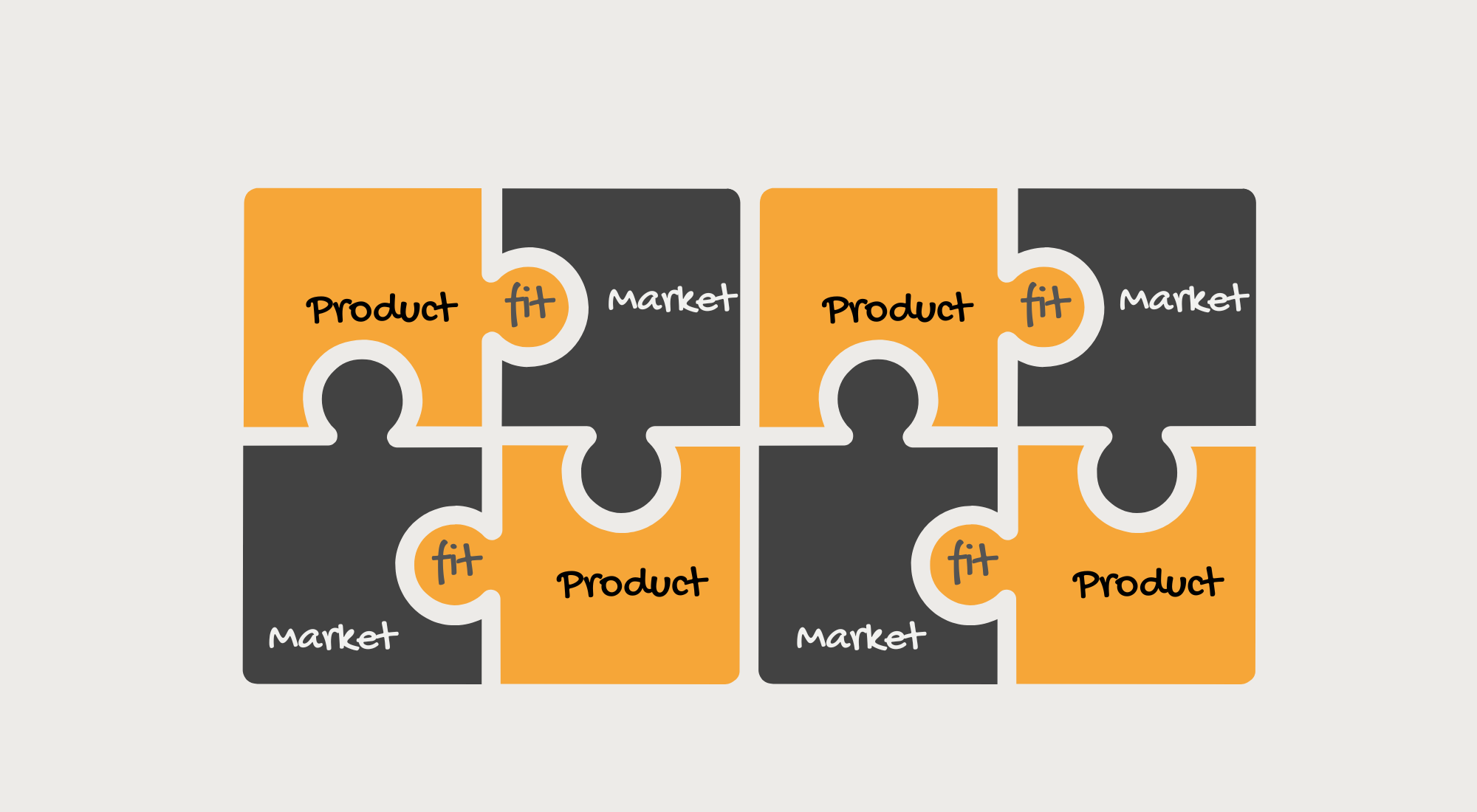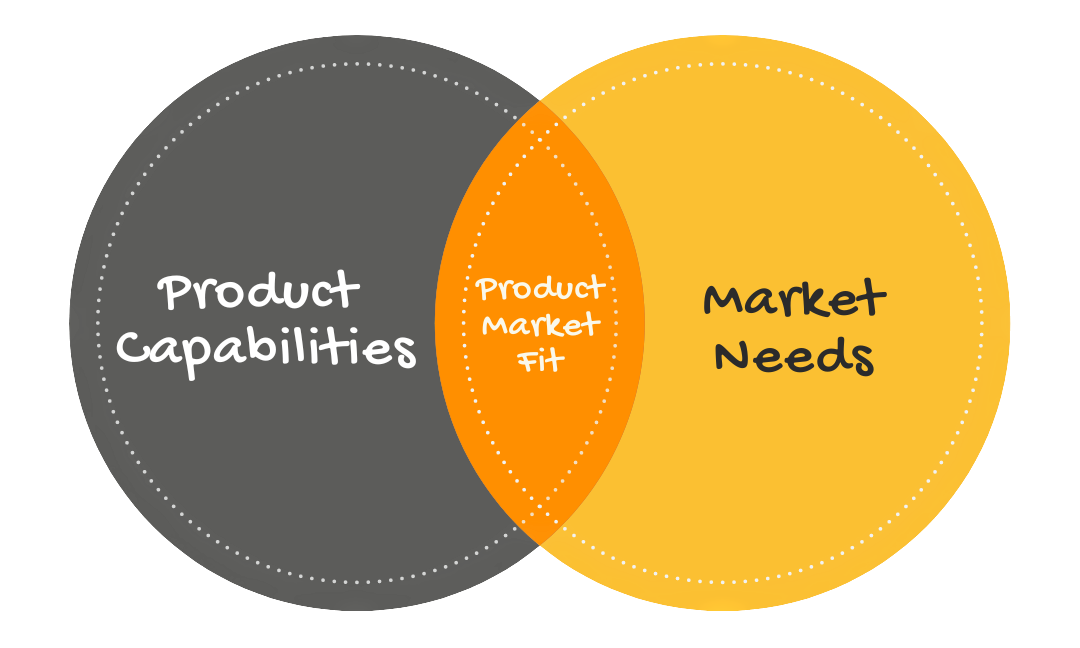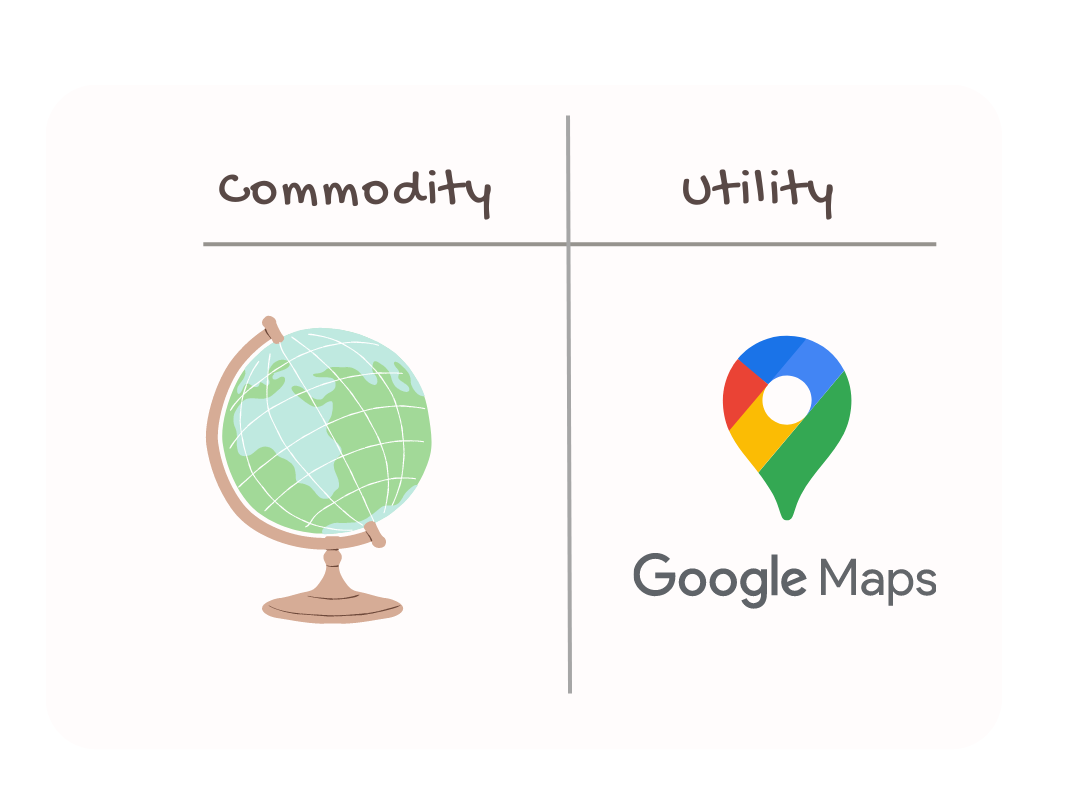How to Measure Product-Market Fit for Your Startup
Dive into the heart of startup success: Product-Market Fit (PMF). Learn how to identify, measure, and achieve PMF with our guide, featuring real-world examples and strategies for success.

Introduction
As someone who's been in the trenches of software development and helped various businesses create tailored solutions, I've seen firsthand the highs and lows that startups experience on their journey. One concept that continually comes to the forefront is the idea of 'Product-Market Fit'.
Think of Product-Market Fit as the magical alignment of your solution perfectly meeting the needs of a well-defined market. It's like the right key for a tricky lock. Achieving this fit is the difference between just surviving and truly thriving in the marketplace.
I'm often asked by new founders and startup enthusiasts about the concept and how to truly know if they've 'cracked it'. I've decided to share my thoughts on the subject and shed some light on what has often been a foggy area for many. So, let's dive in!
Understanding Product-Market Fit

"Make something people want" - the legendary phrase from Y Combinator's Paul Graham echoes through the halls of many a startup, etched into the minds of eager founders. But what does it mean to make something people truly want? That’s where the concept of product-market fit (PMF) comes in.
Above all, it's essential to remember that no two startups' journey to PMF is the same. It’s a nuanced process that depends on various factors like your industry, target customers, and the nature of your product. Therefore, defining PMF and understanding its signs is a crucial first step towards measuring it, which we will dive into in the next section.
Busting Misconceptions about Product-Market Fit
As we delve further into the concept of PMF, let's take a brief detour to debunk some common misconceptions:
A Great Idea Guarantees PMF
A groundbreaking idea does not necessarily mean an instant fit with the market. It needs to be validated, developed, and aligned with market needs through iterative processes.
A Successful Competitor Equals a Successful You
Just because a competitor has achieved PMF with their product doesn’t mean you can replicate their success with a similar one. Your target audience, brand messaging, and overall value proposition also play a vital role in achieving PMF.
Sales Solve Everything
High initial sales may give the illusion of PMF, but it's not always the case. PMF is more about consistent growth and customer satisfaction over time.
PMF Means No More Product Changes
Achieving PMF does not mean your product development journey ends. In fact, it’s just the beginning. To maintain PMF, you'll need to continually update your product based on evolving market needs.
Beyond Traditional Metrics: Measuring Product Market Fit
Measuring Product-Market Fit (PMF) is a nuanced process, and while traditional metrics such as churn rates, monthly active users, and conversion rates provide crucial insights, they often don't paint the complete picture. In my experience of working with various startups and developing custom software solutions at Sych, I have come to appreciate the value of unconventional methods in assessing PMF. These unconventional methods are not meant to replace the tried-and-true metrics, but rather to complement them, to help you gain a holistic understanding of your product's fit in the market.
Let's take a look at some of these unconventional, yet effective methods
Customer Obsession Score

This metric is all about assessing the degree to which your customers are 'hooked' on your product. Are they frequently engaging with your product throughout the day? Does your app or service rank high on their priority list? The ways to measure this can vary - you could monitor the frequency of app usage, observe social media interactions, or conduct user surveys to gauge how often users think about your product. While this fanaticism may be challenging to quantify, it's often a strong indicator of PMF.
The "Can't Live Without" Test

This measure is about identifying how ingrained your product is in your customers' daily routines. For example, consider how disruptive it would be if the Google search engine disappeared one day - many of us rely on it as an essential tool. If your product has integrated itself so deeply into the lives of your customers that they express a similar sentiment, it's a powerful sign of PMF.
Emotional Attachment Index

An emotional connection can significantly enhance customer loyalty, which is crucial for PMF. You could use net promoter scores or analyze customer reviews and feedback for emotional language indicating attachment - expressions of love, gratitude, or even fear of losing your product all point towards strong emotional attachment.
The Aha Moment Metrics

Many successful products have a specific usage 'threshold', after which users tend to remain loyal. Facebook famously found that users who added 7 friends in 10 days were far more likely to continue using the platform long-term. Your 'Aha moment' could be anything, from a particular feature used to a specific duration of engagement with your product. Identifying and monitoring this moment can be a great way to measure PMF.
Utility vs. Commodity Test

This is all about distinguishing whether your product is a utility or a commodity for your users. A utility is a product that offers indispensable value and is used daily, while a commodity is less essential and more interchangeable. Successful startups often convert what was once a commodity into a utility - if your product has achieved this transformation, you've likely achieved strong PMF.
Embarking on this journey to find unconventional measures of PMF might seem daunting, but the most meaningful achievements often lie outside our comfort zones. If these unconventional approaches resonate with you, I encourage you to incorporate them into your PMF assessment strategy!
Product Market Fit Examples
Let's dig into some case studies of successful startups that identified their Product-Market Fit by leaning on metrics similar to those we've discussed in the previous section.
Zoom
An excellent example of the "Can't Live Without" Test is Zoom, the video-conferencing platform that skyrocketed in popularity during the COVID-19 pandemic. As businesses, schools, and personal communications moved online, Zoom became an indispensable tool. It was not just the shift to remote work that made Zoom a success; it was the platform's attention to user experience, reliable connection, features like breakout rooms, and screen sharing that made people stick around. The ease of use meant that anyone, from schoolchildren to grandparents, could use it. These factors showed how deeply ingrained Zoom became in users' routines, which is an extraordinary indicator of Product-Market Fit.
Spotify
The popular music streaming service, Spotify, provides a fitting example of the "Aha Moment Metrics". Spotify's data revealed that users who created a playlist within the first few days of their subscription were far more likely to continue using the service. This insight led Spotify to focus more on the playlist creation feature, making it more user-friendly, and encouraging new users to create their own playlists. They used prompts and made suggestions for user-created playlists, which increased user engagement and resulted in stronger Product-Market Fit.
Instagram exemplifies the "Customer Obsession Score". In its early days, Instagram focused on a single core feature—sharing beautiful photos. The simplicity of the app and the high-quality filters quickly hooked users. As the user base grew, so did the frequency of interactions, with millions of likes and comments exchanged daily. The high level of user engagement and constant social media interactions not only showed the 'hook' users had but also indicated a high Customer Obsession Score, reflecting a solid Product-Market Fit.
No PMF? No Problem - Pivoting Towards Success
Finding Product-Market Fit is a journey, and it's often a bumpy ride filled with many lessons. But if you're a startup that's struggling to find your PMF, don't lose heart. Here are a few strategies that I've seen work in the industry:
Embrace the feedback loop
It's crucial to create an efficient system to gather, analyze, and act on feedback from your users. Don't consider feedback as just criticism, but rather as data that can help you refine your product and bring it closer to your market. Pay particular attention to feedback from your most engaged users—they are the ones who see value in your product, and their insights can be invaluable.
Iteration is key
Rarely does a product achieve market fit right out of the gate. Most successful products have gone through numerous iterations. These changes should be data-driven—rely on your user feedback and metrics to guide your product's evolution. Remember, every iteration is a step closer to finding that perfect fit.
Be ready to pivot
Sometimes, despite all the feedback and iterations, your product might just not find its place in the market. In such situations, don't be afraid to pivot. Some of the biggest success stories in the startup world started out doing something different than what made them successful. A pivot might seem daunting, but it's often the bold move that can turn the tides.
Take the case of Slack, for example, which was originally a gaming company named Tiny Speck. When their gaming product didn’t take off as they'd hoped, they didn’t throw in the towel. Instead, they identified a need for an internal communication tool that they had built for their own use, repackaged it, and Slack, the popular messaging app we all know today, was born.
And, there’s Twitter, which began as Odeo, a podcasting platform. However, when Apple launched iTunes podcasting, they found themselves in direct competition with a giant. They pivoted, focusing on a small internal project they had - a social media platform that limited posts to 140 characters. Today, Twitter is one of the world's leading social media platforms.
Leverage your strengths
Look at the aspects of your product that users love the most and double down on them. There's a reason certain features resonate with users, and it's crucial to recognize these aspects and leverage them to improve your product and user experience.
Create a learning culture
Fostering a culture that celebrates learning and isn't afraid of making mistakes can be an excellent catalyst for finding PMF. When your team is encouraged to experiment, learn, and grow, it creates an environment conducive to innovation, which is essential in the dynamic world of startups.
The Essence of Startups
As we journey through the rough and tough road of entrepreneurship, we are bound to face obstacles and uncertainties. Amid all this, finding your product-market fit can seem like finding a needle in a haystack. But remember, it's this very process that defines the heart of startups.
This journey to PMF discovery is not just crucial - it's transformative. It takes startups from survival mode to growth mode, turning the uncertain into the unstoppable.
Your Journey, Our Mission
At Sych, we understand the importance of PMF, and the role software development plays in making your vision a reality. We've seen the transformative effect PMF can have, and we want to help you achieve just that.
Whether you're working on your MVP or iterating on your tenth version, our team of experts can provide you with the technical prowess you need to bring your vision to life. We offer bespoke software solutions tailored to your specific needs, ensuring your product not only meets market demand but exceeds expectations.
Finding your product-market fit might be challenging, but with the right partner by your side, it's a journey worth embarking on. If you're ready to take your product to the next level, let's connect. We're excited to join you on your journey to PMF and beyond. Let's make the impossible, possible together.
Don't wait for the perfect product-market fit to come to you. Reach out to us at Sych and let's create it together. Because at the end of the day, your success is our mission.

